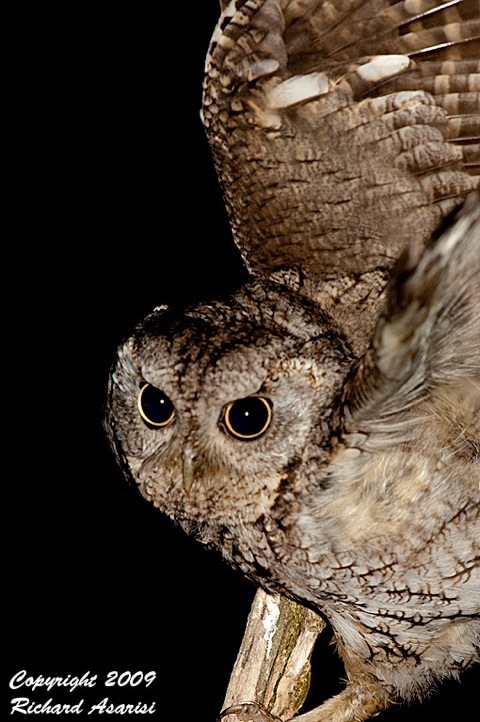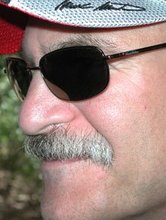Early Spring Migrants
The last week in April I had a chance to look for some early spring migrants. I was lucky enough to find some Chipping Sparrows and some Eastern Towhee’s.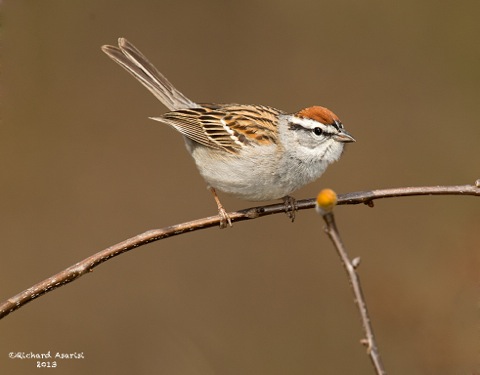
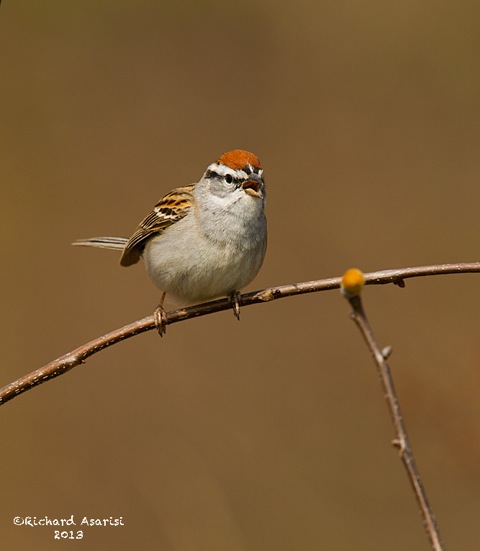
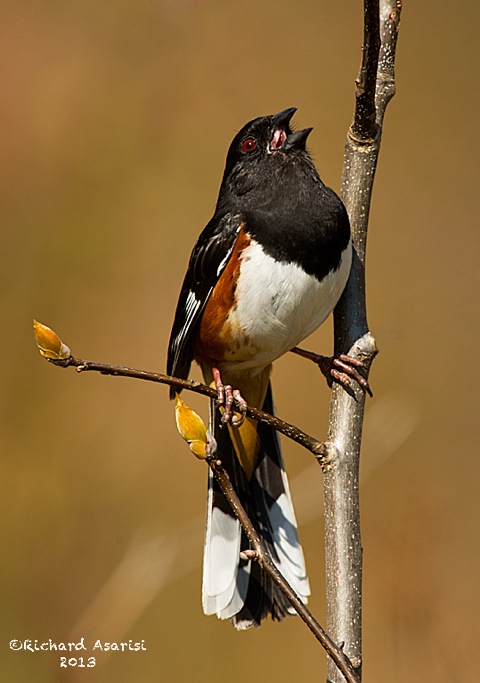
Ohio Wood Duck Trip
Gary and I had a chance to travel to Ohio back in October and spend a few days there shooting Wood Ducks with Matthew Studebaker.
Matthew took us to North Chagrin Reservation which is one of the best places in the United States to photograph wood ducks.
Matthew is a fantastic teacher and he will show you how to get the ducks into that perfect photogenic spot, whether it be next to some reeds or swimming through a brilliant reflection. Matthew also knows exactly which parts of the ponds to shoot from and when, to take advantage of the duck’s daily patterns and work with the light. We even got a chance to work on some flight shots later in the morning.
THANK YOU MATTHEW!!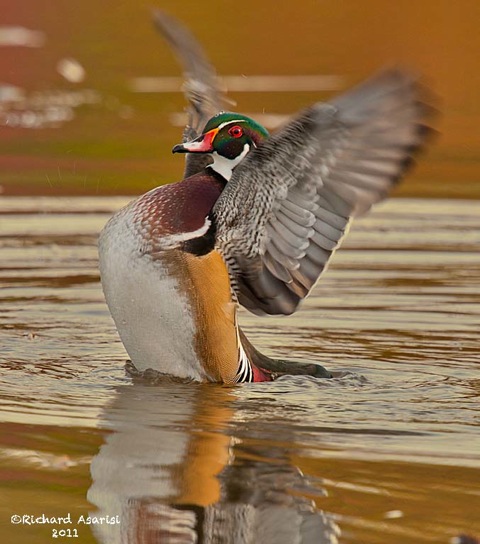
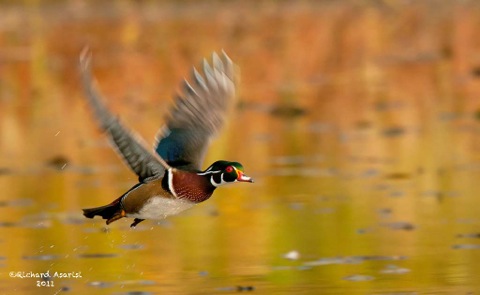
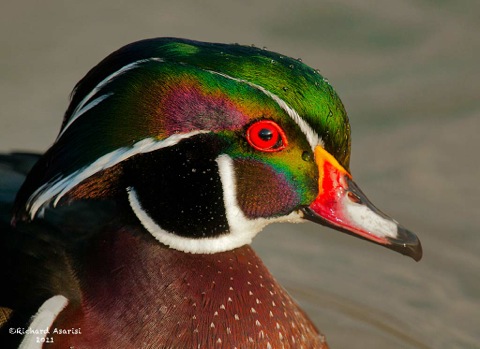
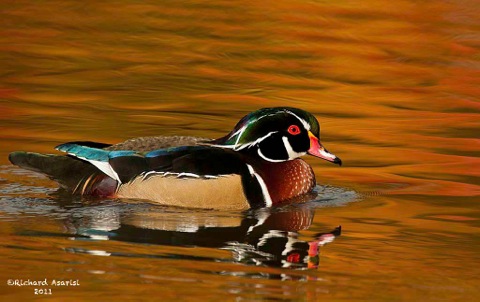
Ohio Warbler Trip
Gary and I had a chance to travel to Ohio last weekend and spend a few days there shooting with Matthew Studebaker.
Ohio has many species of Warblers, some of which we don’t have here. We spent many hours looking for and photographing warblers under the direction of Matthew. We were able to find and photograph some really cool species.
You can find more information about Matthew’s Bird Sessions here: http://www.studebakerbirds.com/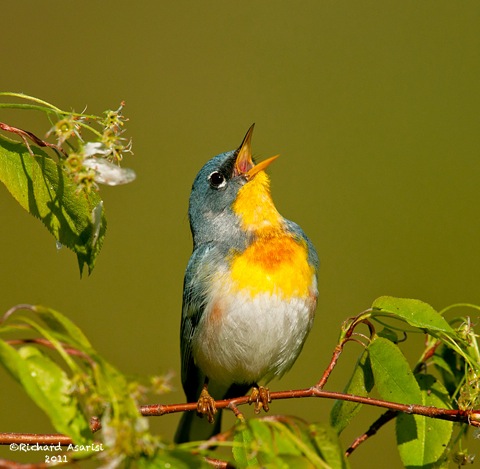
Northern Parula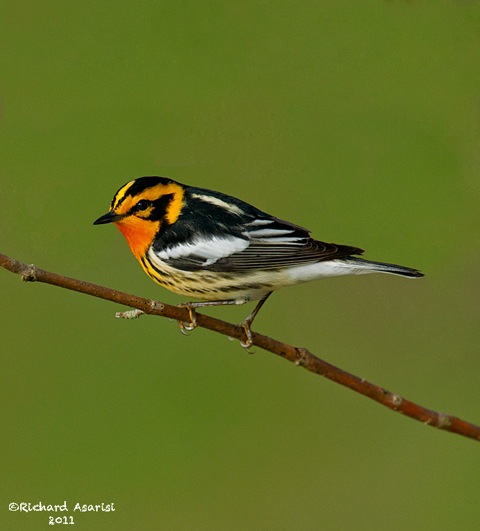
Blackburnian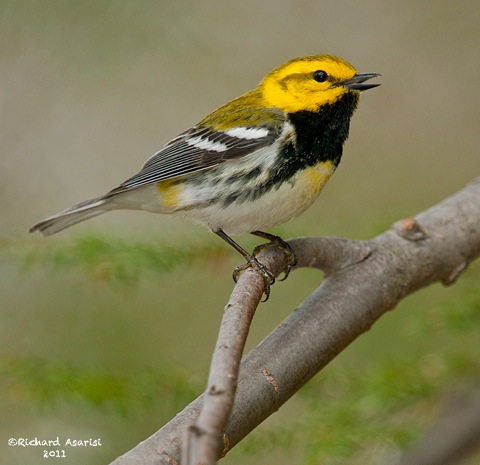
Black-throated Green
Magnolia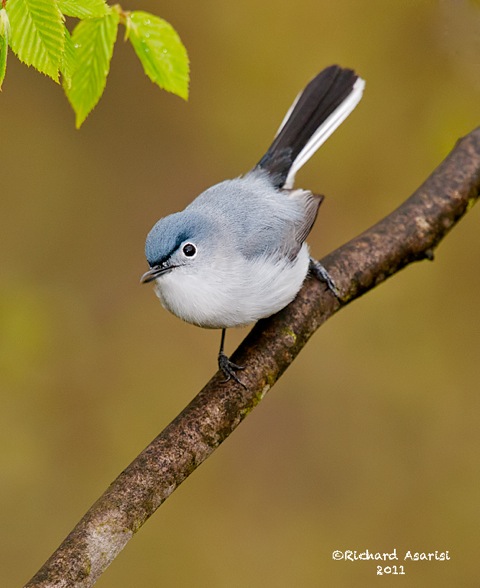
Blue Gray Gnatcatcher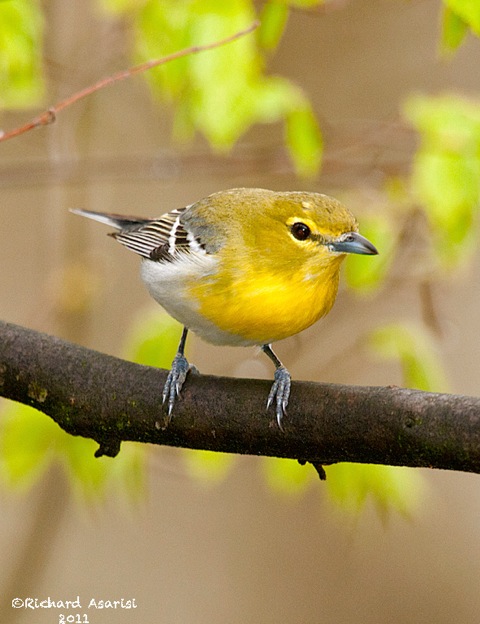
Yellow-throated Vireo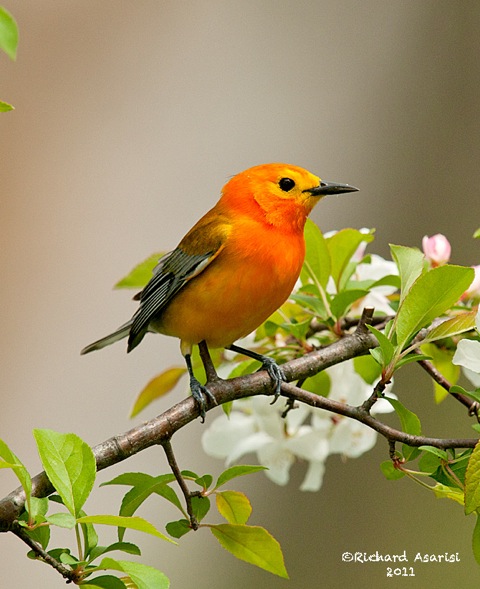
Prothonotary
Early Warbler Migration
And so it begins.... Warblers are beginning to make their way back north. Indeed it’s still a bit early, but there are a few warblers already around. I was able to find these in the last week or so.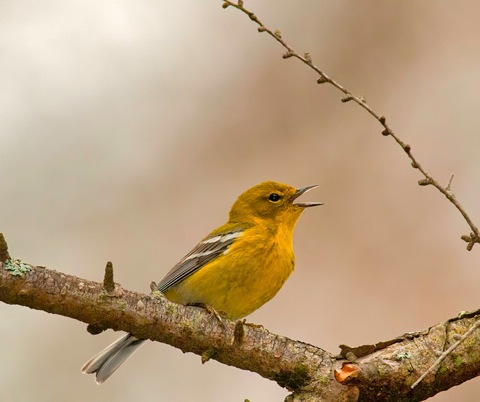
Pine Warbler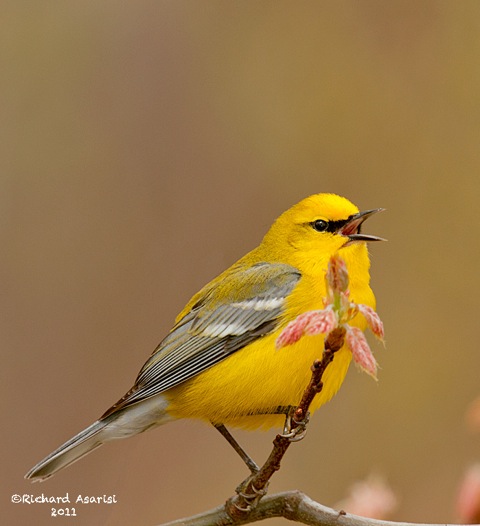
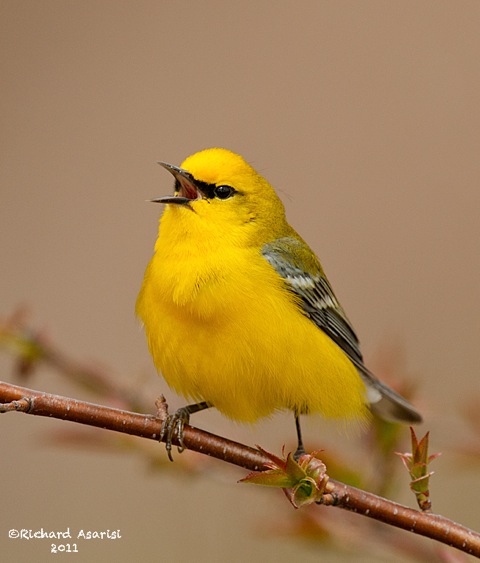
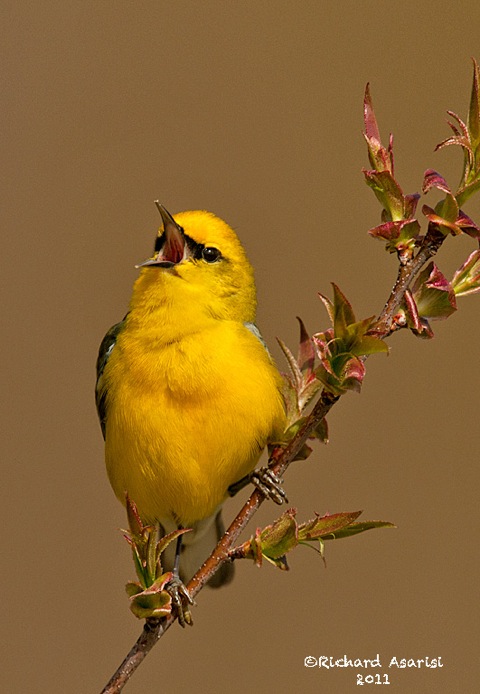
Blue Winged Warbler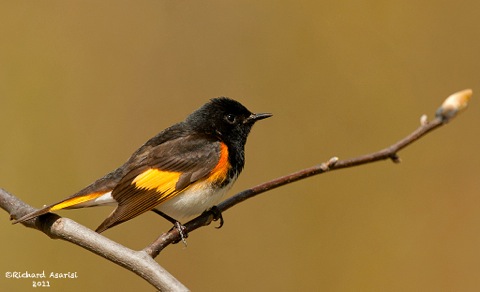
American Redstart
Hooded Mergansers
A few of us guy’s went out searching for birds yesterday to see what we could find. We hit a lot of locations and found 2 Blue Heron’s, unusual for this time of year. We also found scores of Mallards and many Mergansers. It appears as though the Mergansers are already paired up.
The Male Hooded Merganser has a large white crest surrounded by black. The hooded merganser likes to hang out in forested wetlands, brackish estuaries and tidal creeks in winter.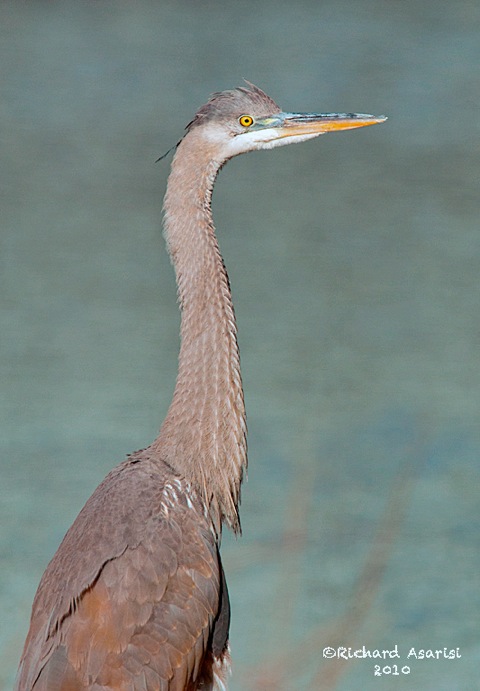
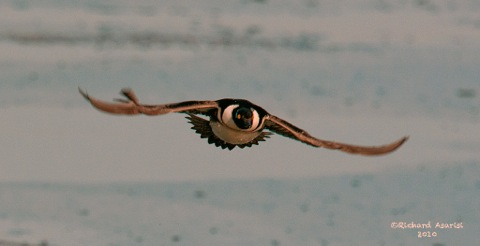
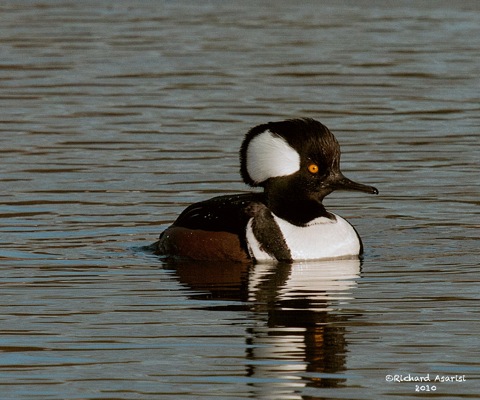
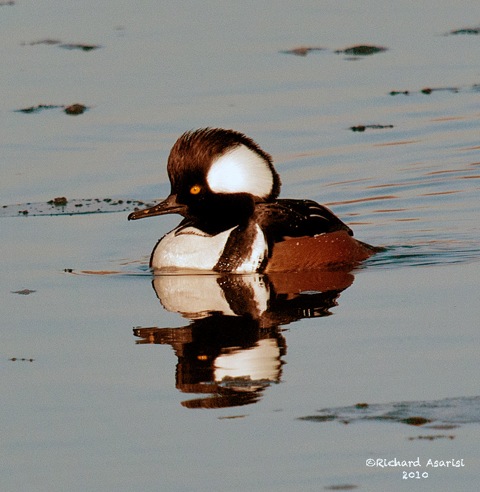
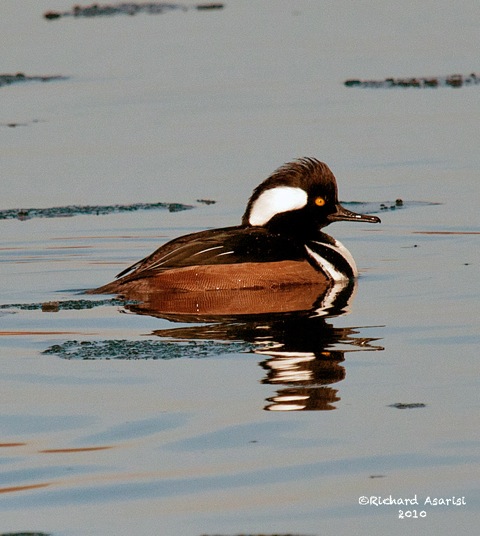

Hermit Thrush
Gary and I took a ride up to Sky Meadow to look for some different birds to shoot. Most of the day was spent trying to shoot an ovenbird and pine warbler, both of which didn’t cooperate.
While we were eating our lunch we saw this fellow on a nearby rock with food in its beak, to see it once would have been luck but to see it keep coming back, led us to believe that there was a nest nearby and that the food was for the babies.
The Hermit Thrush is a small thrush with olive-brown to red or gray-brown upperparts, black-spotted underparts and a rufous tail. It will have a white eye ring, pink legs and feet. The Hermit Thrush is considered to have one of the most beautiful songs in all of North America.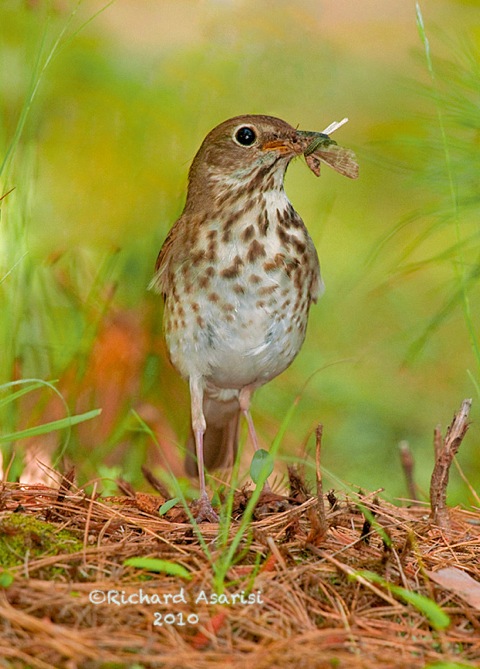
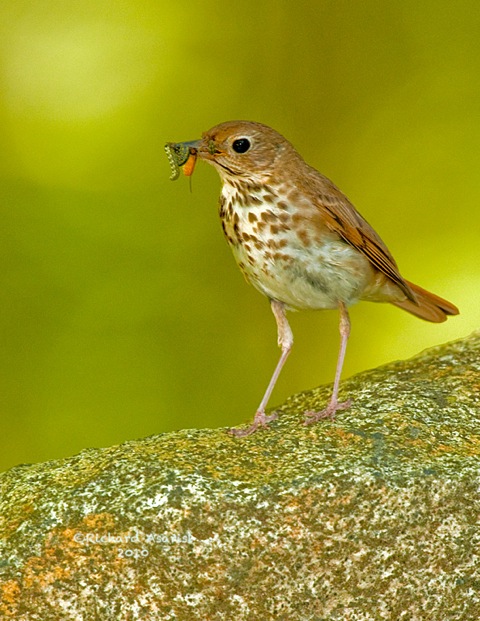
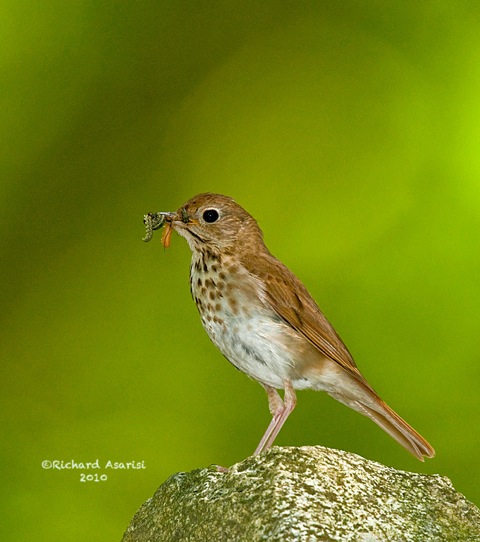
Blackburnian Warblers
The Blackburnian Warbler is a medium sized warbler with a striking yellow-orange head, a black cap and cheek patch and a striking orange throat. Blackburnian Warblers eat caterpillars and beetles, usually hopping from limb to limb high in tall trees. Will also snatch flying insects out of the air.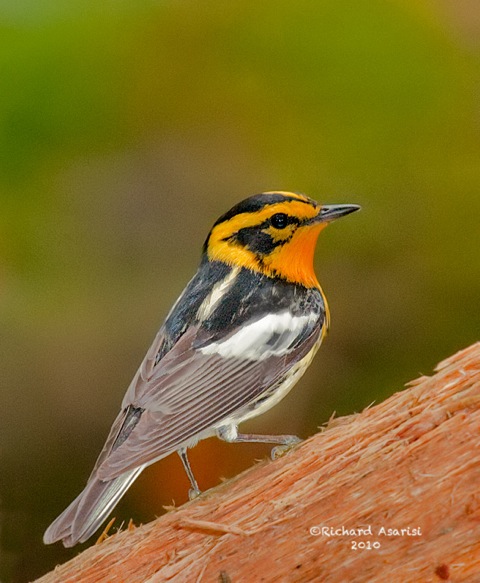
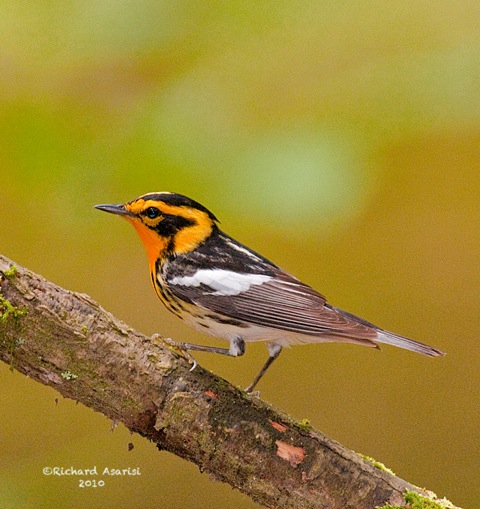
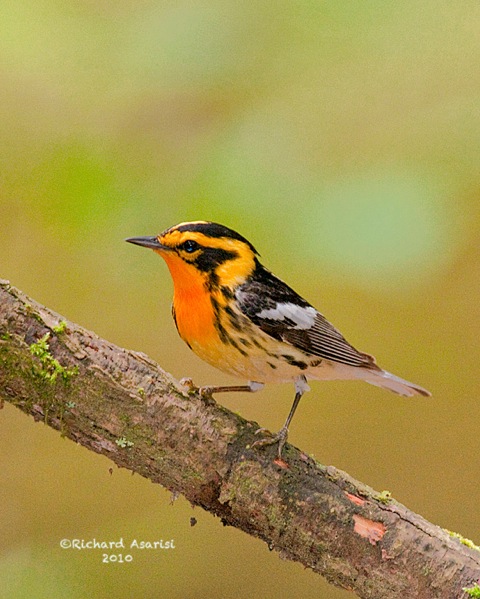
American Redstarts
The American Redstart is a very active warbler with black upper-parts and head. It has very distinctive orange-red markings on its wings, sides and tail. Its underparts are usually white and its bill, legs and feet are black. It darts about very quickly gleaning insects from the air or from foliage. Sometimes it is referred to as the butterfly of the bird world because of its quick fluttering movements and bright orange colors on the wings and tail.
This bird prefers habitats of deciduous 2nd growth forests.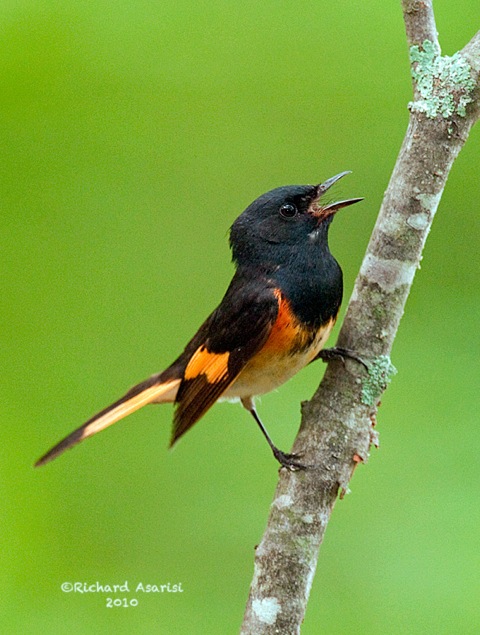
Canada Warbler
The Canada Warbler has slate gray upper parts and bright yellow under parts. The bright yellow is streaked with black to form what looks like a necklace around the birds neck. There is an eye ring that can be white or yellow or any where in between. Its bill is mostly gray and its feet and legs are pink. This warbler likes dense undergrowth in mixed hardwood forests.
It is getting harder to find in our area because their population is said to be declining at rates of 4% to 7% per year.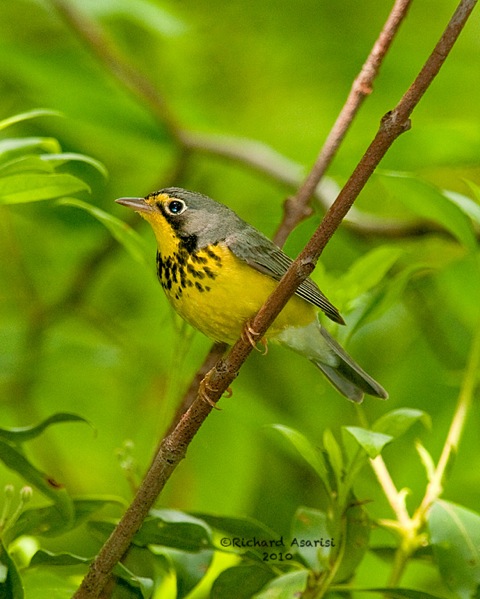
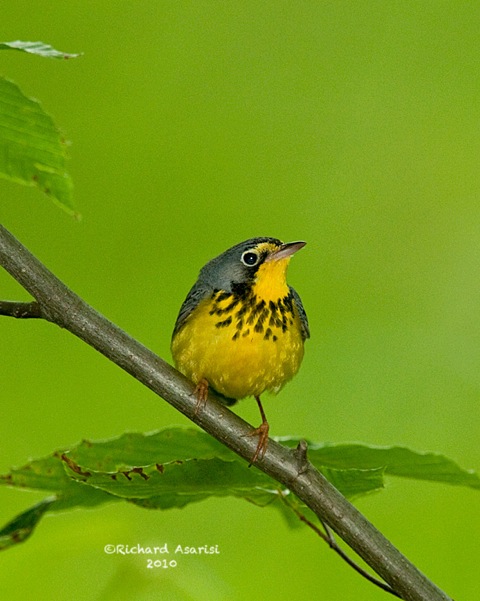
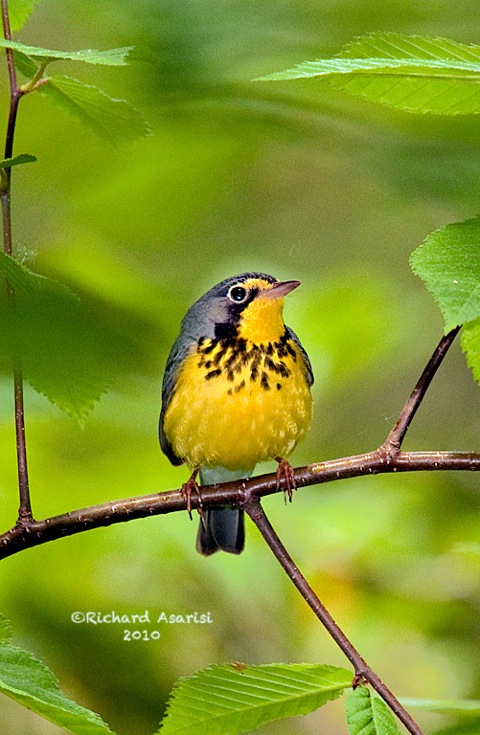
Eastern Towhee
Drink your tea. That’s what you’ll here if you come across an Eastern Towhee singing for you. The male has striking marks of deep black and reddish-browns that stand out. The eastern towhee is part of the sparrow family. These birds love to spend their time in the undergrowth where you can usually hear them rummaging the ground for insects, acorns, seeds or berries.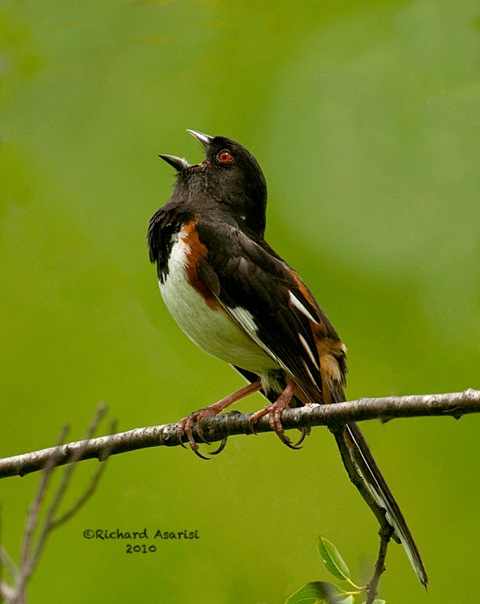
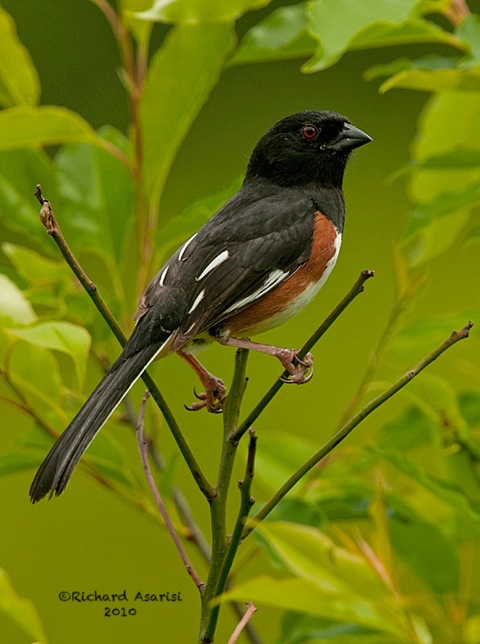
BoBo's Anyone?
You many be wondering what a BoBo is. BoBo is short for Bobolink of course, a very cool bird that is part of the Oriole family. As you can see from the photos the male has a black head with what looks like a buffy white cap. They have a mostly black body with white on their back and wings. Bobo’s can only be found in large expanses of open field habitat. They are getting harder and harder to find these days since we keep destroying more and more of our open fields.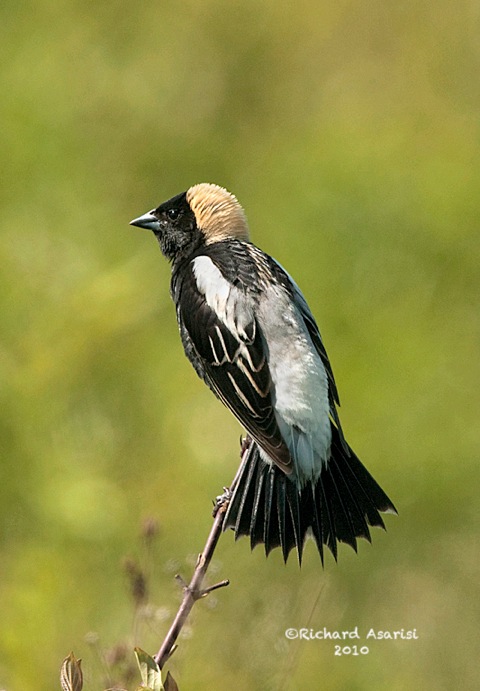
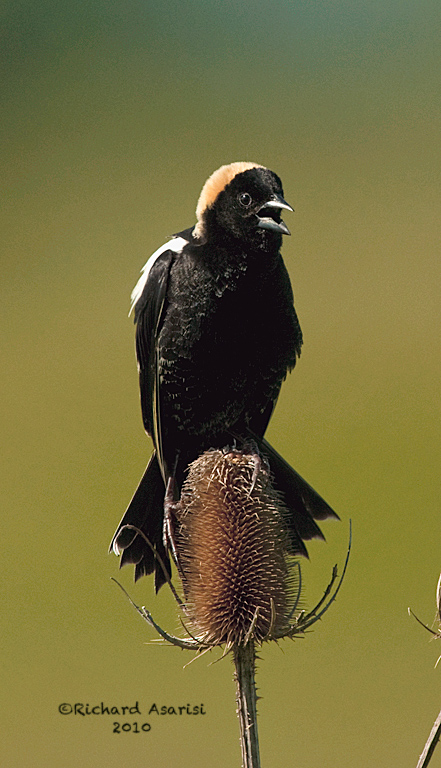
More Early Warblers
I got the chance to head out and see what migrants worked their way in to the area in the last week. We found some good finds today, a Rose Breasted Grosbeak, and Gray Catbird. We found a Yellow Warbler and a Common YellowThroat. I got the chance to photograph a Great Egret and a Red Wing Blackbird.
Later in the day we headed over to my favorite watering hole and found some new arrivals, there were still some Pine Warblers around but we also found a few Prairie Warblers too.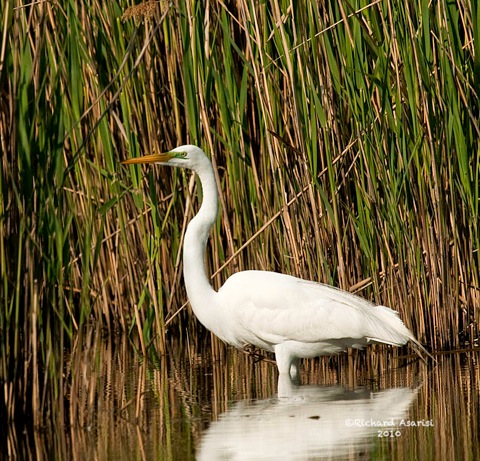
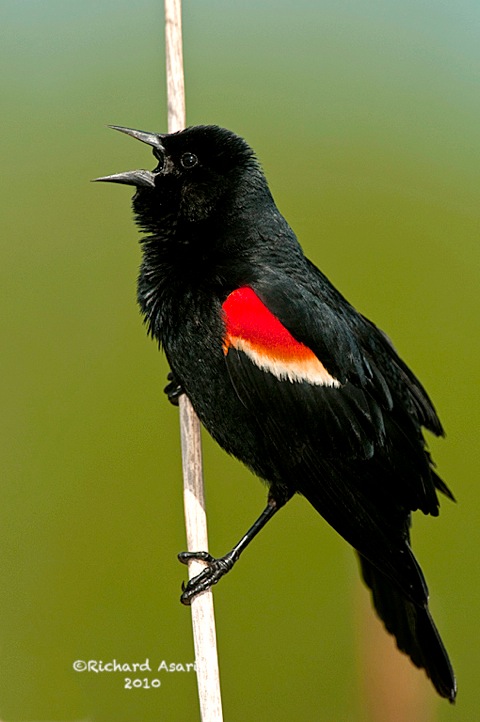

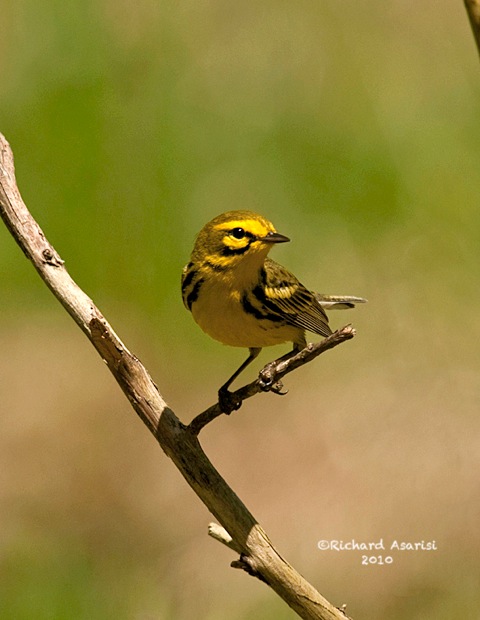
Early Spring Warblers!
And so it begins, with the warm days we’ve been having for the last few weeks it has helped bring the foliage out on the trees that laid dormant all winter. Warblers don’t stick around here for the winter months, they head south to warmer climates like the Caribbean or South America. As the days grow longer and warmer here in the north the birds slowly make their way back to their breeding grounds. Not all warblers breed in our local area, but there are some that do. Most head up to the Borel Forest area in areas like Maine and Canada. So many of these guys are just migrants.
I was lucky enough to get a chance to head to my favorite watering hole yesterday, and see what early warblers I could find. I wasn’t disappointed, I found some pine warblers and some black and white warblers. Only the pine was cooperative and allowed us to photograph him while foraging for insects.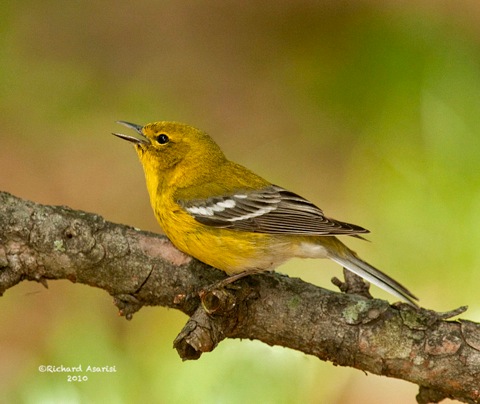
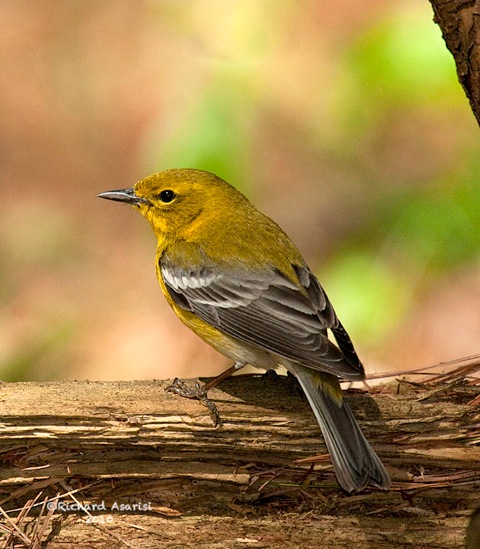
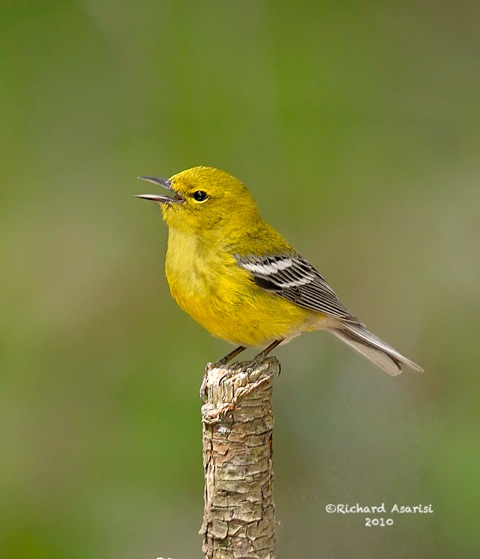
Raptor Shoot
I had the opportunity to shoot some raptors as a birds in flight workshop. The workshop was held in Belchertown MA, at Sky Meadow. You may recognize that as being Les Campbell’s place. The raptors were provided by a falconer Brian Bradley. Some of the raptors included a Male Kestrel, Harris Hawk, Barn Owl and a Gyrfalcon.
Here are a few shots from the workshop.
BARN OWL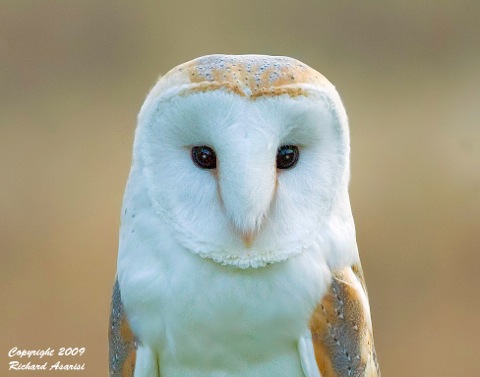
GYRFALCON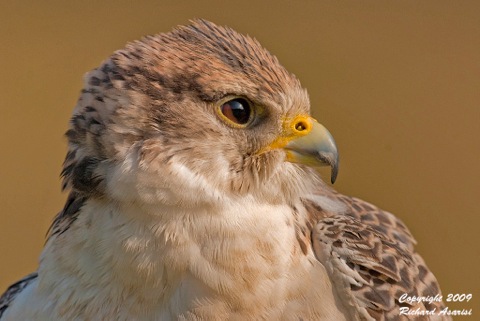
HARRIS HAWK
BARN OWL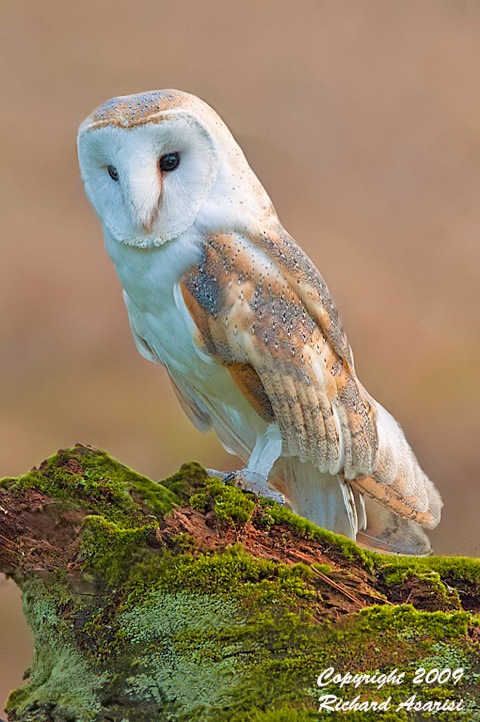
BARN OWL IN FLIGHT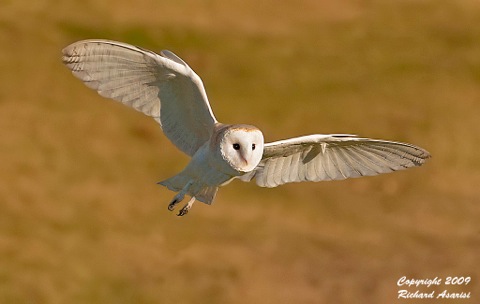
Thanksgiving
It’s that time of year once again. Time to spend time with the family and reconnect, here in New England its also a good weekend to get out and see what migrant birds one can find. I plan to take the gear out one day this weekend and look to see what I can find. Huh it will help to burn off some of those calories! I was looking through my images for some shots of turkeys and I was surprised to find that I really didn’t have many. I guess next time I come across them I’ll actually have to photograph a few. hahaha
The wild turkey has made a big come back here in the Northeast. It was once hunted to near extinction. But controlled hunts and restricted areas helped bring this bird back to its plentiful existence. Here is what a real wild turkey looks like the kind the pilgrims actually killed, cleaned and ate. No it’s not a Butterball!
Vultures!
Did you know that vultures have one of the largest wingspans of all birds? To see these birds gliding gracefully in the air is just amazing. Vultures feast mostly on carrion. In Connecticut for many years only the Turkey vulture flourished. But in the last 10 years or so the Black vultures have been sharing the territory. How do you tell them apart? Look at the head, for one the black vulture has a black head, the turkey has a red head. Also look at the tail, the black vulture has a short stubby tail and the turkey's is a bit longer. Also the feathers on the turkey are a little more on the brown side. When these birds are in flight look for them to rock from side to side a sure indication that what you see is a vulture.
TURKEY VULTURE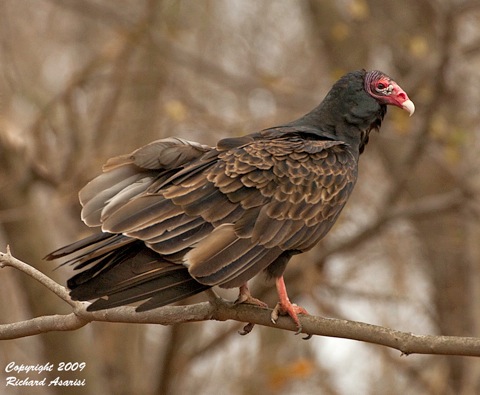
BLACK VULTURE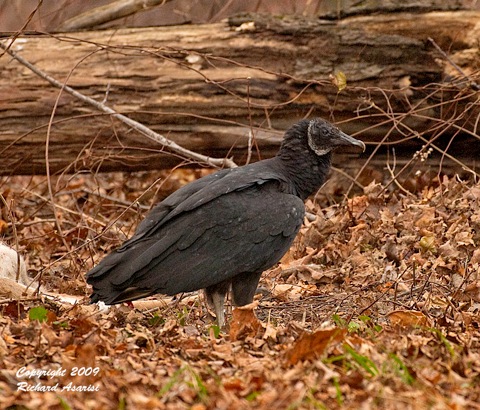
Kinglets, a Hawk and a Rub
I had a chance to head out to the lake today to see what I could find.
I came across a small flock of Golden-Crowned Kinglets. They are usually found in spruce or white pine and other conifers. They always seem to hang out in small groups of less then ten, the flock I found was a group of three. These guys pick very small insects off the ends of branches and they will often hover or hang upside down while they are foraging. I was lucky to see all these behavior traits today which helped me determine the exact species.
GOLDEN_CROWNED KINGLETS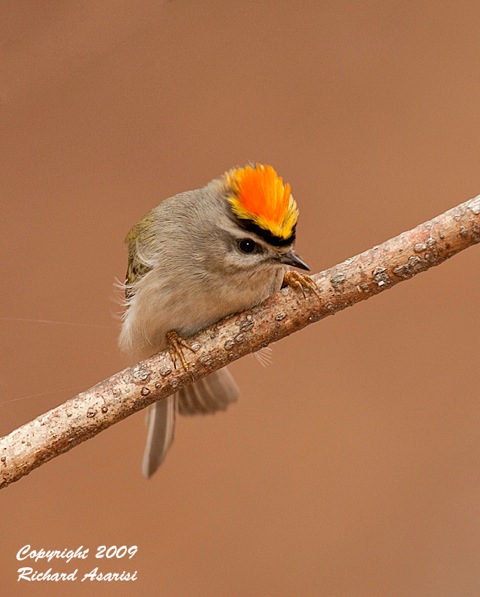
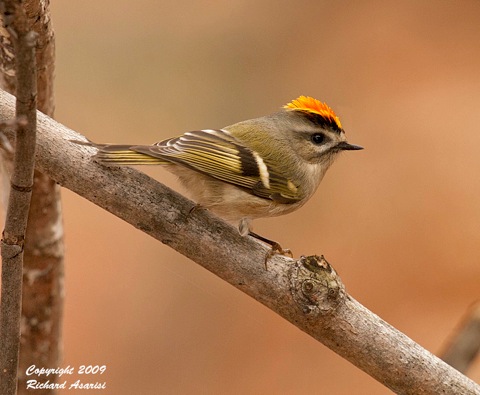
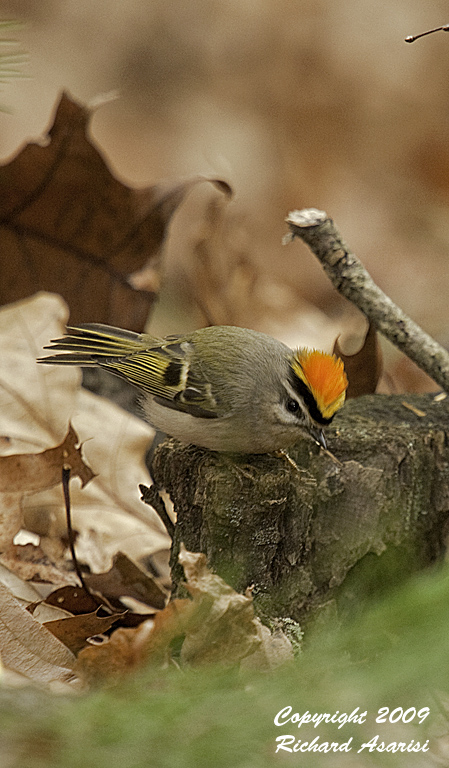
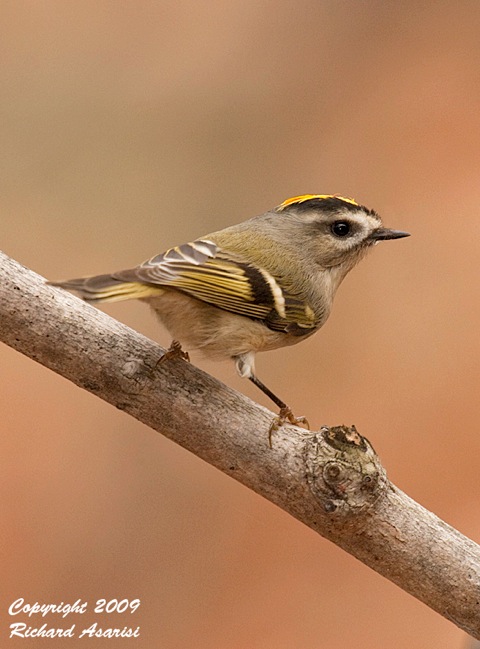
While driving home from the lake I noticed this hawk perched in a tree keeping watch over the field below. This hawk is a Red-Shouldered and usually hunts from a perch in the forests or in clearings. These hawks feed on reptiles, small mammals and some birds. In spring you can even find them foraging for frogs along the edges of ponds and lakes. They are also very vocal and if you find one I'm pretty sure you will hear it too. I did in fact hear this one calling several times while I was photographing it.
RED-SHOULDERED HAWK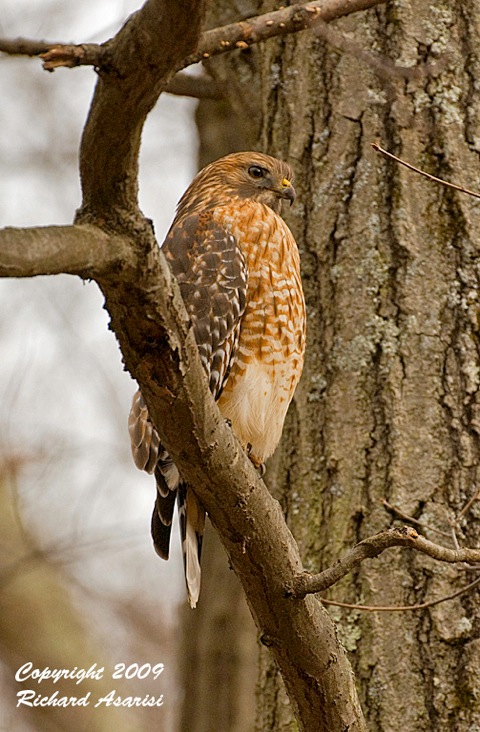
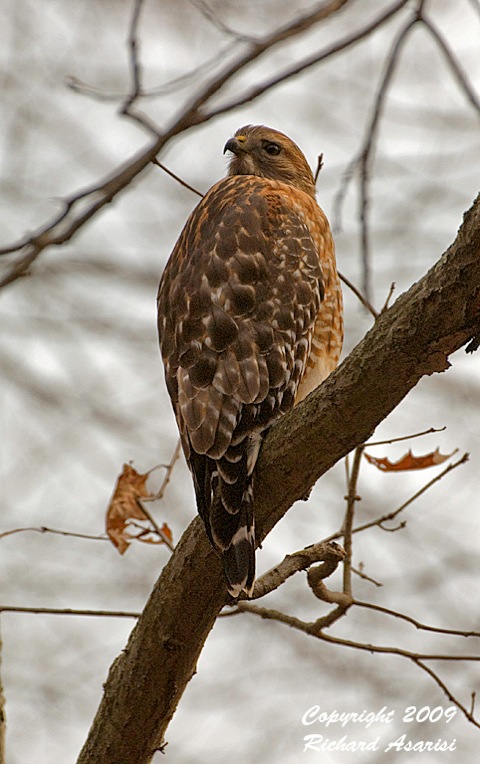
While I was out at the lake today I came across a few antler rubs. Antler rubs are common during deer mating season. Bucks will rub their antlers on trees to mark their territory and to make noise. Bucks have tiny scent glands on the top of their head so when they rub they are leaving their scent, hence marking their territory. By the looks of these rubs this seems to be a good size buck.
ANTLER RUB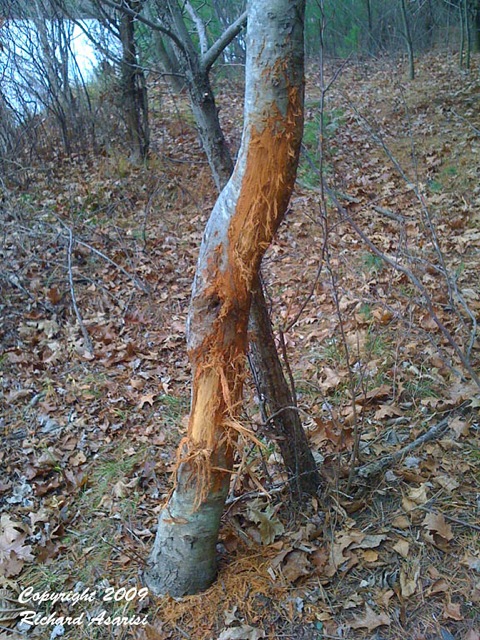
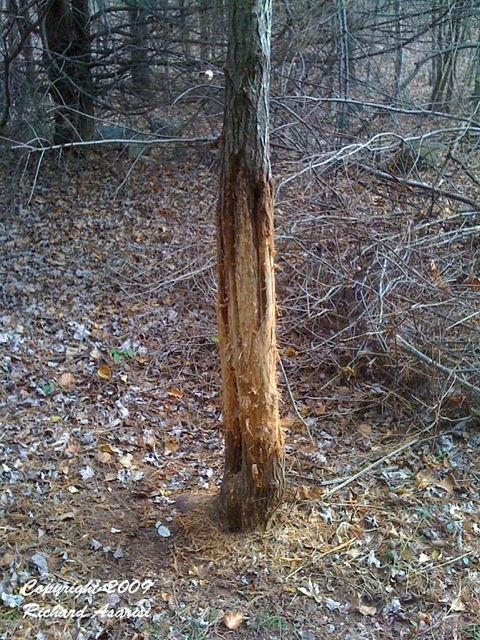
Fall Feeder Birds
Many people have commented this year that there have been very few birds at their feeders. Where did all the birds go? Rest assured they didn't disappear. This year we had an over abundace of rain in the summer months, this led to a bumper crop of seeds, acorns and nuts of every kind. So with so much natural food in abundance there is no need for the local birds to frequent your feeders. But as the weather turns colder and there is snow or ice covering the food supply the birds will be back looking for that seed you put out for them. So be sure that if your seed has been sitting in your feeder for a long time clean it out, remove the old seed and any mold that has started to grow, and put fresh seed in and be patient.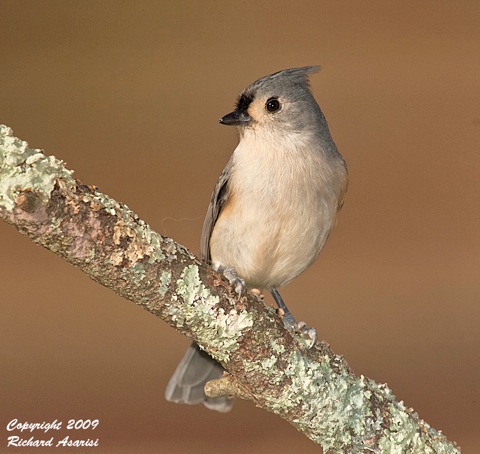
Tufted Titmouse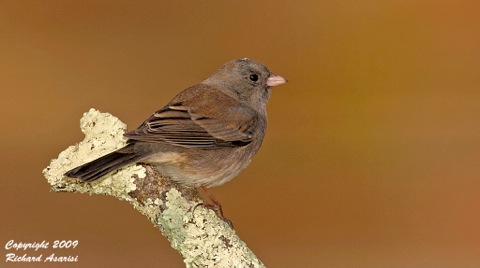
Female Dark Eyed Junco
The Summer Lull
I really don’t like this time of year much as far as shooting goes. Since spring migration is over the birds start to look a little bedraggled by this time of year. Mostly from raising their broods of young. So its always a challenge as to what do I shoot this time of year. It’s slightly to early to shoot deer, elk and moose, thats best done in the fall. Yes of course there are still many birds around this time of year even hummers and I do shoot them until they leave in September. Most birds start to look awful this time of year because of the molt, when their spring colors change to their winter colors. Rather then put up pictures of ugly birds I picked a few of my favorite shots from the last few months that I haven’t posted. Maybe its time to head to the shore or Jamaica Bay!
Northern Harrier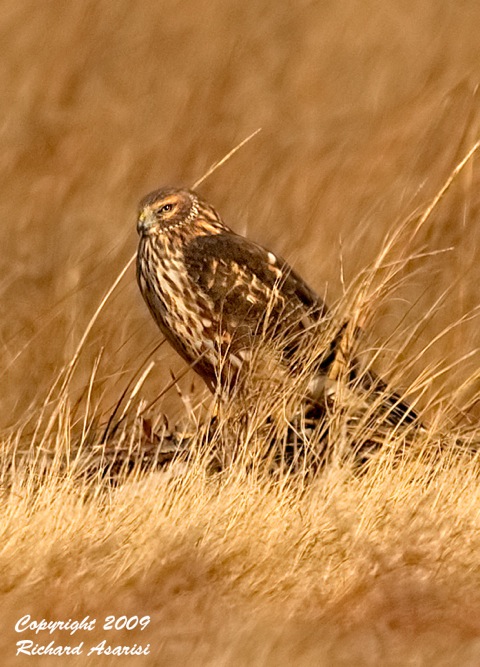
Chipping Sparrow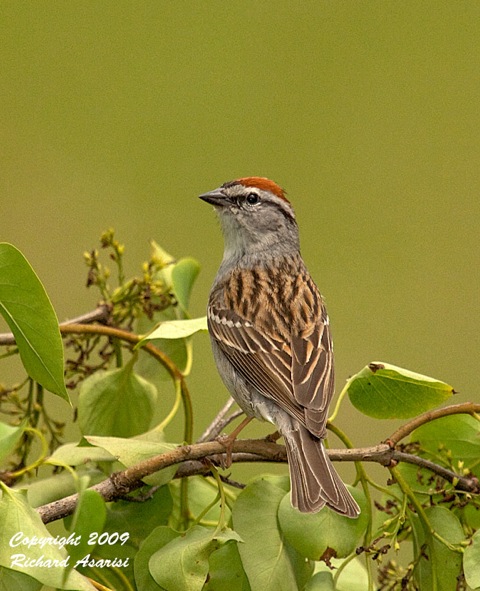
American Robin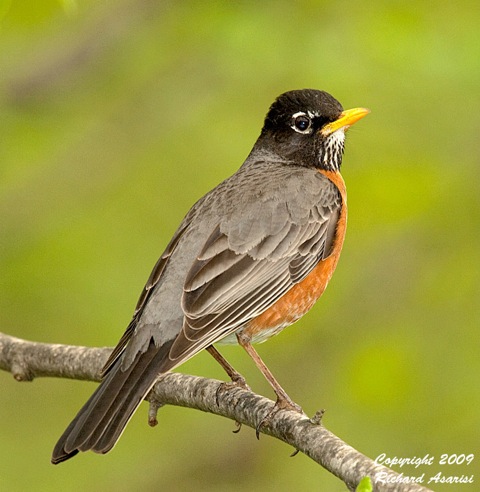
Eastern Towhee
Drink Your Tea!
Thats the sound of the Eastern Towhee! The Towhee is part of the Sparrow and Bunting family, it has a black face, back and chest with rufous-red sides. It has a long tail with white outer tail feathers.
The typical habitat would be woodland edges, old fields, thickets and overgrown pastures. Usually feeds on the ground where it will scratch for food.
I was lucky to see many of these birds this spring, including a few in my own yard. But to get these pictures I had to travel to a more eastern forest here in Connecticut. They weren’t to difficult to find, in fact they were very plentiful there. It was a lousy overcast and rainy day but I’m glad I got to watch them sing and study their behavior patterns. Do you have some near you?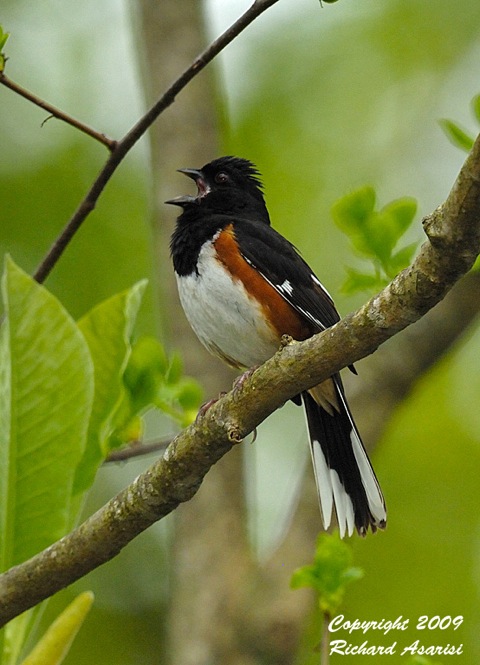
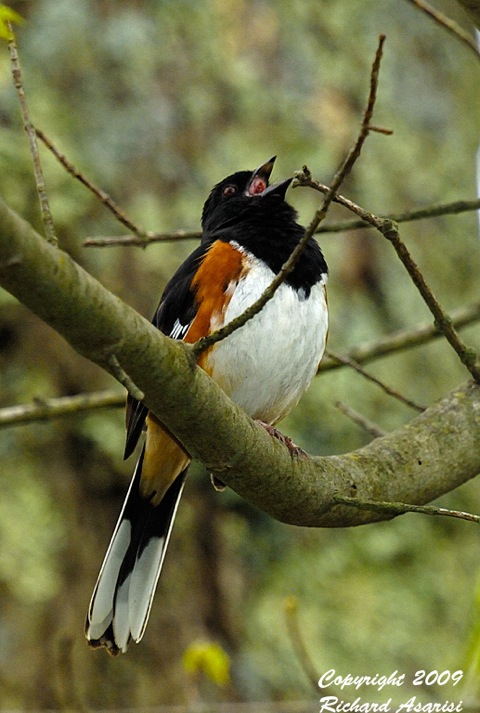
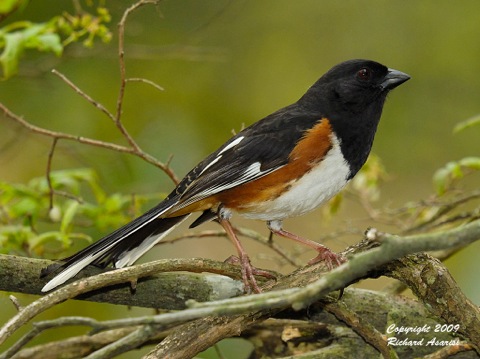
Sky Meadow Visit
On Saturday, June 20 a few of us from the New Haven Camera Club took a ride up to Les Campbell's place. Les Campbell, renown for his nature subjects and Quabbin Park scenes, invites you to visit his Photo Gallery at Sky Meadow Studio. You'll find it filled with framed photographs - treasures for your home or office and for gift giving. The Studio is also available for small group functions, workshops, slideshows, retreats and outings. If you are interested in individual or group portraits with a natural backdrop, you'll find a perfect setting in and around Les' Sky Meadow homestead. And, you'd be hard pressed to find a better tour guide for a trip to Quabbin Park.
Conveniently located off Route 9 (1/2 mile east of the Belchertown entrance to Winsor Dam)
Hours: Wednesdays 1-7 PM (June through mid-October)
Sundays 1-4 PM (April, May and mid-October to Christmas)
Other times, by appointment
Les Campbell / Sky Meadow Studio
Ph: (413) 323-7405
The day we went to visit Les it was cloudy with very light mist and fog in the air. Les has a hummingbird setup where you can place your camera on the tripod and photograph the hummers coming to the feeder. Sometimes there is lots of hummer activity and sometimes there is very little. It would figure that the day we went the activity was very slow. There are also many other things to photograph at Les’ place including old barns, aquatic life around the pond and many birds. You will also find wildflowers for macro work and if your lucky you might catch a glimpse of a hawk or an owl.
Here are a few shots of a Scarlet Tanager a few of us got to photograph while there. Thanks to Les for the hospitality!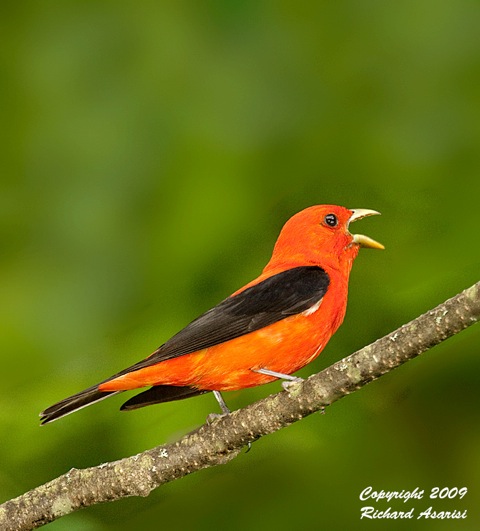
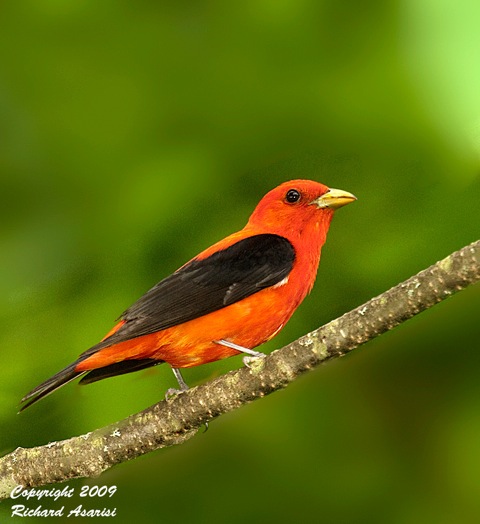
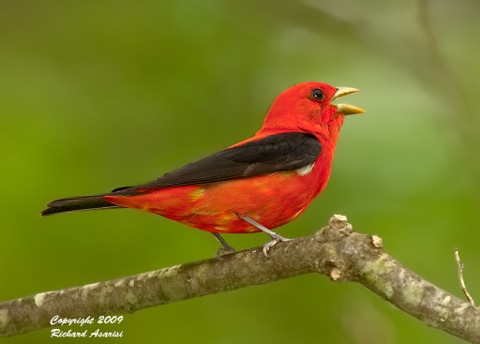
American Redstarts
The American Redstart is part of the Wood-Wrabler family, and its about 5 inches long.
As you can see here the male is black with orange patches on it sides, tail and wings and has a white belly and a touch of white under the tail. Redstarts eat mostly insects and flying insects. You can find these guys in deciduous and mixed forests, small groves and second growth woodlands. These birds are very active and can’t stay still for much more then a few seconds. That makes it a challenge to even try to photograph them.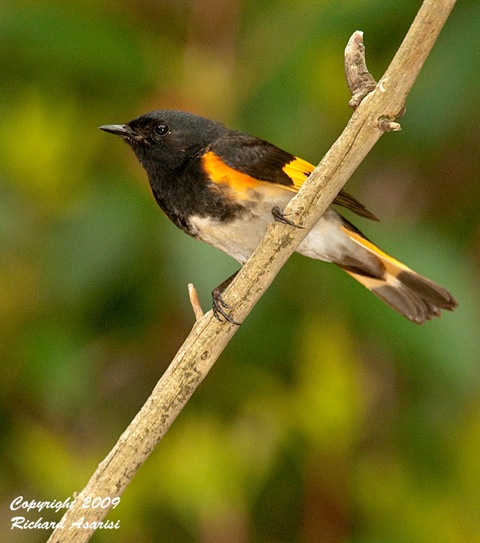
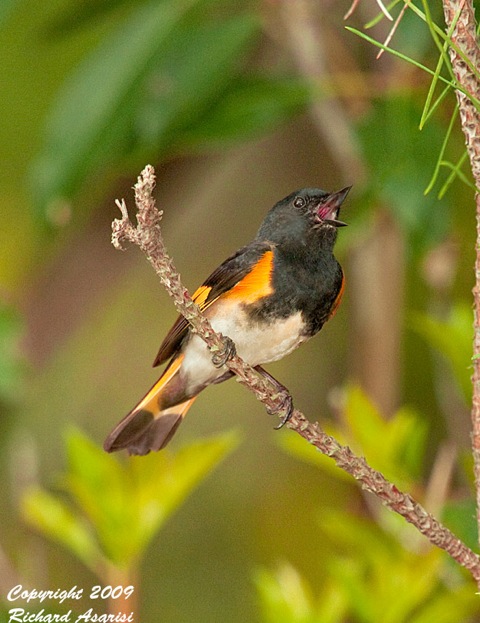
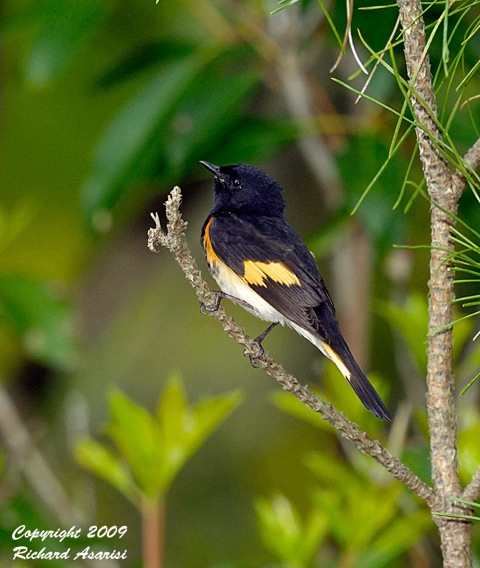
Hummingbirds
Its that time of year once again, Hummingbird season! I just love to shoot these little critters. It’s so much fun to set up the hummingbird rig and take as many photos of these guys as possible. This year I am working on a new setup, one that adds a few more lights and helps me illuminate the gorget. So far I’m still tweaking the set up but in a short time you will see the best results ever.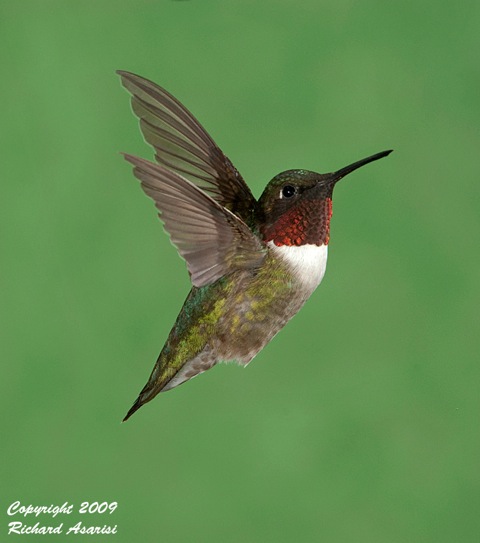
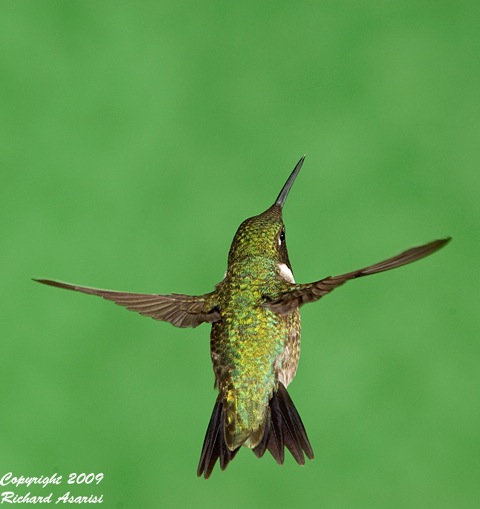
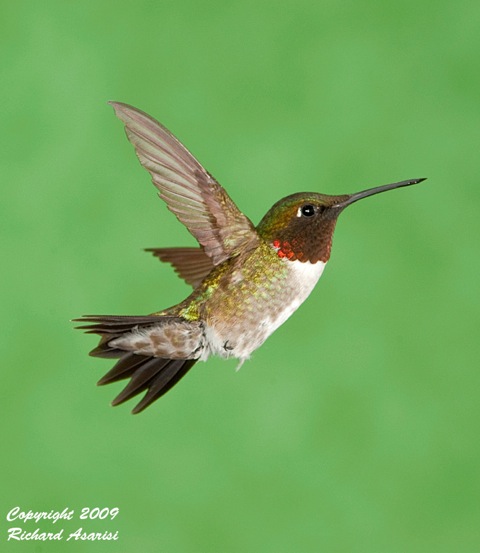
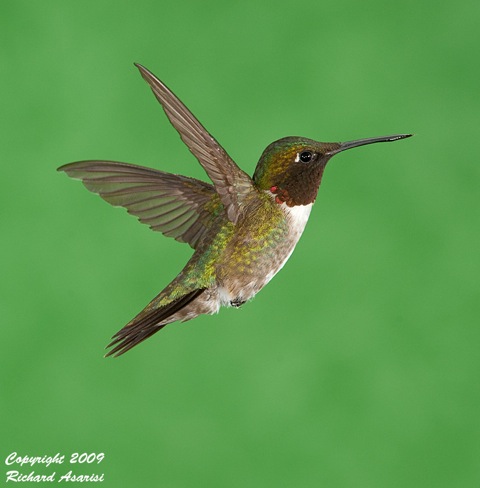
Even More Warblers and an Owl
Things have slowed down considerably the last few weeks. Most of, if not all the migrants are gone now. Only the local nesting varieties are left. I had a chance to get out and shoot a few times and was lucky to come up with some good stuff. Chestnut sided Warblers nest in Connecticut in several locations, you can find them and get lucky like you see here. I really like this owl shot a lot, to bad I didn’t get all his wings in the shot.
CHESTNUT SIDED WARBLER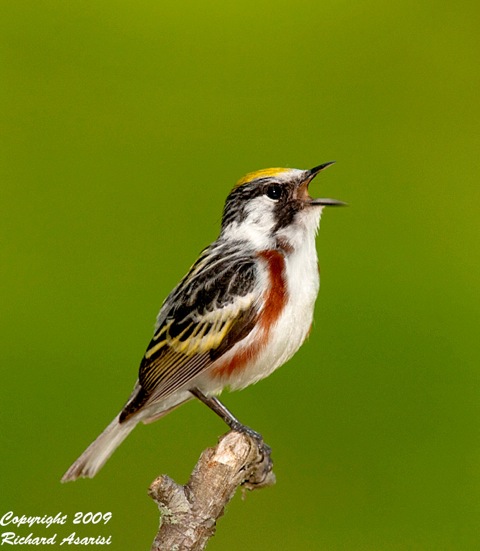
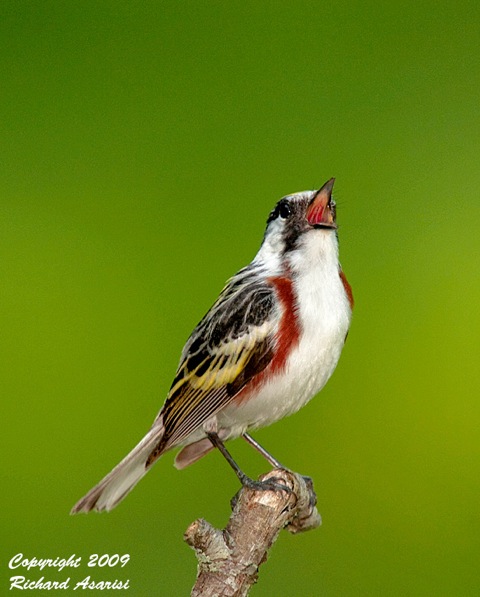
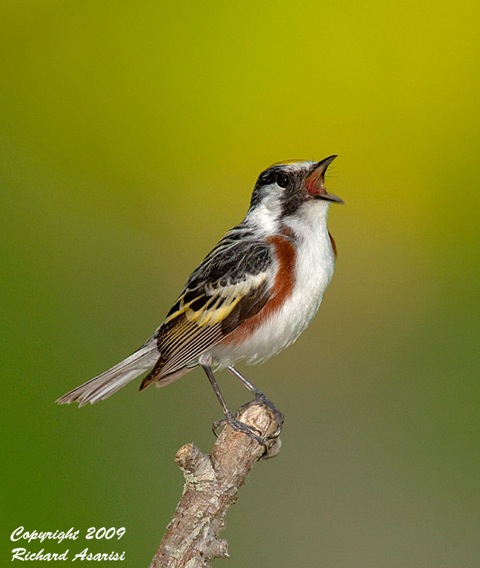
BLUE-WINGED WARBLER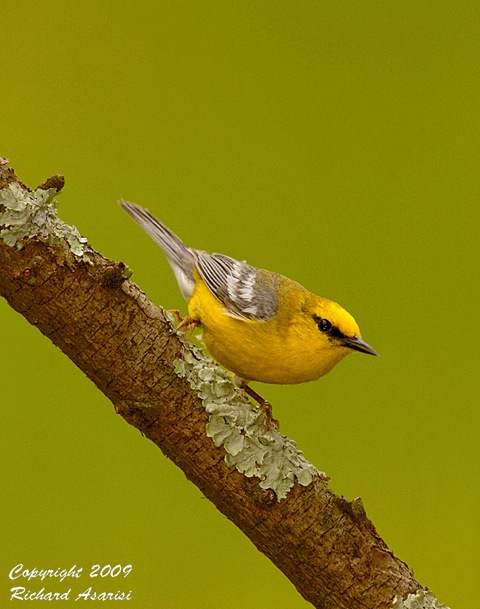
EASTERN SCREECH OWL